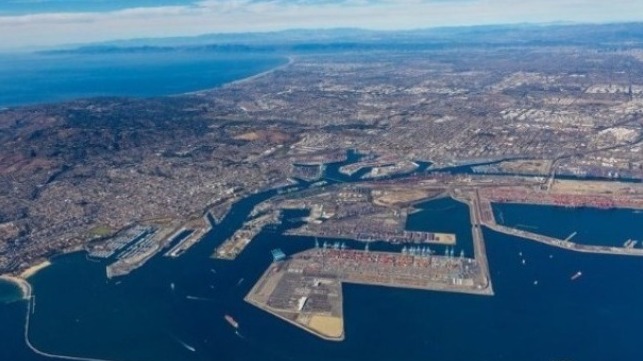California Ports Continue to See Record Volumes

California’s major seaports all reported continued record results in April driven largely by strong consumer sales which are driving record levels of imports. The ports of Long Beach, Los Angeles, and Oakland all reported new records for the month and continued to expect strong imports continuing into the summer of 2021. However, they noted that the downside is the continued weak exports levels at each of the ports.
Another month, another record said the Port of Oakland. “We’re sounding like a broken record, but containerized trade continues to flourish as the U.S. economy rebounds,” said Port Maritime Director Bryan Brandes. “And as we’ve said before, there doesn’t seem to be a letup in sight.”
April marked the 10th consecutive month that the Port of Long Beach has broken cargo movement record for a particular month amid what port officials called “a historic cargo surge.” It was the first time the port surpassed the 700,000 TEU mark in April beating the previous record set in April 2019.
The Port of Los Angeles reported a similar streak noting that it has set records in six of the last nine months, and it was the ninth consecutive month of year-over-year increase. In April 2021 the port moved 946,966 TEU and since the beginning of 2021, it has handled over 3.5 million TEU.
Oakland, while a smaller port, has benefited both from the surge in imports and the overcapacity situation in southern California which prompted some boxships to divert to the further north port. Oakland handled just over 100,000 TEU in April, its third consecutive month of import gains. It was also the second straight record month.
The rebound for container shipping began in July 2020 as Asian manufacturers returned to operations and U.S. consumers staying at home increased their e-commerce purchases. Each of the ports continued to report that strong consumer demand was fueling their growth, while Los Angeles noted that they were observing the return of the service sector. Some economists have felt that as services return and consumers get out more it could be reflected in slower growth for retail sales.
International trade the Port of Long Beach predicted will help to jumpstart the economy. “We are in the midst of our best trade periods in port history, but we cannot forget that the national economy remains in recovery mode,” said Long Beach Harbor Commission President Frank Colonna. “We are closely collaborating with our industry stakeholders to handle the resurgence of cargo we’re experiencing after the dramatic declines we saw last year due to COVID-19.”
The Port of Los Angeles highlighted that its terminals continue to work above their design capacity, but with the support from all sectors of the operation, the ports continue to make headway to reduce the backlog and delays. “Fewer ships are going straight to anchor, and of those that do, the wait time is decreasing as our labor force and supply chain partners adeptly handle the steady stream of cargo on our docks,” said Port of Los Angeles Executive Director Gene Seroka.
The strong imports however are being cited as one of the factors holding back U.S. exports. All the ports cited strong increases in empties shipping out back to China to meet demands from the Asian factories to get goods to the U.S. New Federal Maritime Commission Chairman Daniel Maffei speaking as part of a briefing with the Port of Los Angeles said that one of his priorities would seek to improve conditions for exporters. He noted, however, that also begins inland to make sure the costs and infrastructure to move the goods to support exports.
While all the ports continue to see wait times for terminal space, they also reported declines in the backlog. Los Angeles, for example, said that vessels at anchor in San Pedro Bay were down as low as 13 in recent days versus a peak of 60 early in 2021. However, the average time at anchor remains nearly seven days, but more ships are going directly to the terminals.
Chairman Maffei said that another goal of the FMC would be to focus on new data tools and better data sharing. He believes that could have helped the systems to keep up with the strong surge of imports. He and the ports are also hopeful that President Biden’s calls for infrastructure investments would help the ports to continue to upgrade their operations to stay ahead of anticipated future growth in volumes.
